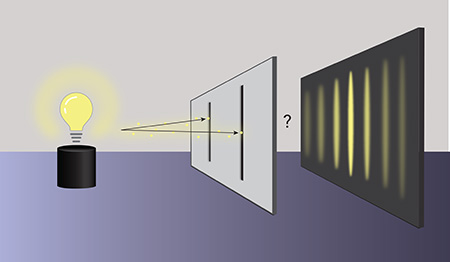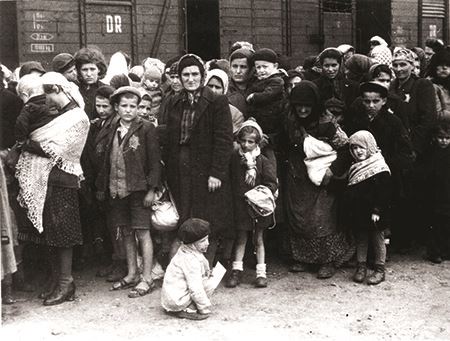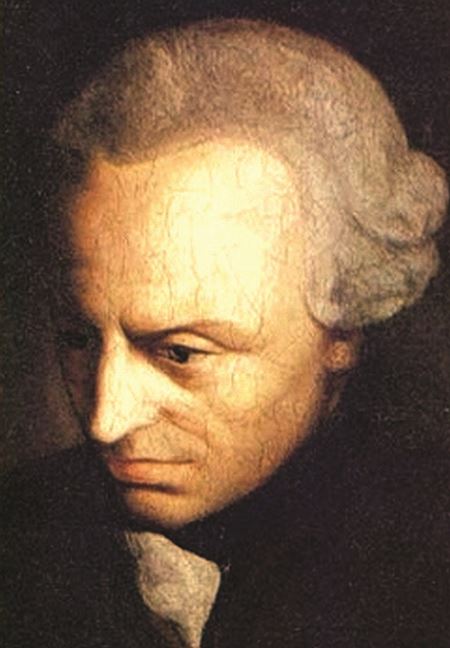Age Nine: Be Kind. Be Smart.
61. Flatland
Flatland: A Romance of Many Dimensions is a novella by Edwin Abbott Abbott (1838–1926) written in 1884. He uses the pseudonym “A Square” to tell us about the two-dimension world of Flatland that he lives in.
At one level the book is a satire on Victorian culture, but the lasting contribution of the book is the idea of worlds having less—or more—than the three spatial dimensions we are familiar with. A Square describes how life in his two-dimensional world works.
On New Year’s Eve in the year 1999, A Square has a dream about visiting Lineland, which is a one-dimensional world in which the inhabitants are “lustrous points.” A Square meets the monarch of Lineland and tries to describe to him the two-dimensional world of Flatland. The monarch becomes incensed at such an outrageous idea and tries to kill him.
After this dream, A Square is visited by a three-dimensional sphere named A Sphere, an inhabitant of Spaceland (a three-dimensional world—imagine that), who visits Flatland every thousand years to try to convince one of its inhabitants of the idea of his world with three dimensions. A Square is given the opportunity to see Spaceland for himself. Subsequently, A Sphere tries to convince the leaders of Flatland of the existence of the three-dimensional world of Spaceland. The Flatland leadership acknowledge the existence of Spaceland among themselves but decide that this information is subversive and would be disturbing to the other Flatland inhabitants. They seek, therefore, to suppress this knowledge and stipulate the silencing of anyone who spreads information about the possibility of a three-dimensional world.
A Square then tries to convince the Sphere of the possibility of worlds with four or five or six dimensions, but the Sphere cannot fathom it.

An illustration from Flatland, A Romance of Many Dimensions
Finally, A Square has a dream in which the Sphere introduces him to Pointland, a zero dimensional world which has one inhabitant. This sole inhabitant is the monarch of Pointland and the universe at the same time. The Pointland monarch sees any communication as a thought that exists only in his own mind, and that is all that can exist. The book ends with this reference to the philosophy of solipsism, which is the idea that the self is all that can be known to exist.
The book is remarkably forward looking in that the idea of a world with more than three spatial dimensions had not previously been discussed in science or otherwise. Although the book focuses on a world with less than three dimensions, the description of the struggle of two-dimensional creatures trying to imagine a three-dimensional world is clearly intended to encourage us three-dimensional creatures to imagine a world with four or more dimensions.
The book was not successful when it was published, but was rediscovered 31 years later when Albert Einstein introduced his idea of “general theory of relativity” in 1915. In Einstein’s theory, gravity is described as being caused by curvatures of our apparently three-dimensional world in a fourth dimension. A letter written by William Garnett, published in the prestigious science journal Nature on February 12, 1920, acknowledges Abbott’s prescience: “Some thirty or more years ago a little jeu d’esprit was written by Dr. Edwin Abbott entitled Flatland. At the time of its publication it did not attract as much attention as it deserved … If there is motion of our three-dimensional space relative to the fourth dimension, all the changes we experience and assign to the flow of time will be due simply to this movement, the whole of the future as well as the past always existing in the fourth dimension.”
Physics is now contemplating a model of the world with 12 or more dimensions. See the entry for String Theory.
I recall reading Flatland as a teenager in the 1960s and it opened my eyes to the idea that the universe may be far more remarkable than the world we are able to perceive.
![]()
In the alternative reality of Danielle: Chronicles of a Superheroine, Danielle gives a copy of Flatland to her sister to help her understand her ideas about worlds with many dimensions.
62. Quantum probability fields
To understand the concept of quantum probability fields, it useful to start with the famous “double slit” experiment. In 1801, Thomas Young beamed a light wave towards two adjacent (closely spaced) slits as seen in the image above. The result was an interference pattern on the back surface. He believed that this result demonstrated the validity of the wave theory of light: that light was composed of waves (a wave has a varying level of some property, like waves of water on the surface of the ocean). He reasoned that the light wave was split into two waves and that the two waves recombined on the back wall creating the interference pattern that was seen.

The configuration of the classic double slit experiment
However, in experiments about two centuries later, it was shown that the light hitting the back wall was absorbed as individual particles (which we call photons). Subsequently, photon detectors were also placed at the slits and it was found that each photon passes through one slit or the other, and not both. If light were a wave, each photon would be passing through both slits.
These experiments show that light acts both as waves and as particles, which is referred to as “wave-particle duality.” This apparently contradictory finding applies to other particles as well, such as electrons.
A common interpretation of the wave-particle duality is that each particle is actually a probability wave. The value of this wave as the photon approaches the two slits determines the probability that the particle will go through one slit or the other. Since light consists of a very large number of photons, we see a smooth interference pattern on the back plate. According to this interpretation each photon does not have a determined location and path. There is some probability that it is going through one slit and the inverse probability (1—the probability of it going through the first slit) that it is going through the second slit. Observation by an observer resolves the uncertainty and the photon “decides” which path it has actually taken retroactively. A quantum probability field is just the probability wave extended in three dimensions. This is one of the puzzling apparent ambiguities of quantum mechanics.
![]()
In the alternative reality of Danielle: Chronicles of a Superheroine, Danielle makes a subtle physics joke by calling this interpretation an “anthropomorphization.” One interpretation of “anthropomorphize” is to give human qualities to an animate object. Another interpretation is to use human interpretations when explaining a natural phenomenon. It is this latter interpretation of anthropomorphization that Danielle is referring to. (See the entry for Anthropomorphization.)
We find it relatively easy to understand the idea of a probability wave or field, but according to the nine-year-old Danielle, each photon is actually a field of “photon-ness,” and the idea of probabilities is just our human way of trying to make sense of it.
Later on, Danielle will hypothesize a theory where there is a “hidden variable” that explains the apparent chance decision of each photon. According to this idea, there is some hidden mechanism in the photon (and other quantum scale particles) that we are unable to detect but which determines its “decision.” So the decisions are not probabilistic (that is, random) but are determined (by the hidden variable), although we cannot detect the mechanism(s) that account(s) for the path of each particle.
How You Can Be a Danielle and become a physicist.
63. Anthropomorphization
An anthropomorphization or anthropomorphism is the attribution of human or humanlike properties or characteristics to entities that are not human and often not even alive. For example, ancient cultures often attributed the “decisions” of such forces as the wind and weather to gods with human characteristics and personalities.
![]()
In the alternative reality of Danielle: Chronicles of a Superheroine, nine-year-old Danielle is calling the probability field theory of quantum mechanics an “anthropomorphization,” referring to the idea that each photon “decides” its course of action based on a Cloud of probabilities.
See the entry for Quantum Probability Fields.
64. From each according to his ability, to each according to his need
The slogan “From each according to his ability, to each according to his need” is regarded as the core philosophy of communism. It was popularized by Karl Marx (1818–1883) in his 1875 essay Critique of the Gotha Program. It was used earlier by the French socialist politician Louis Blanc in 1851.
I recall in 1959 our seventh-grade social studies teacher wrote this slogan on the blackboard and asked the class what we thought of it. Everyone responded that it sounded like a pretty good idea. He then revealed that it was the official goal of communism. Everyone gasped as this was the height of the cold war against Soviet communism. Some of the students wondered out loud whether our teacher might actually be a communist and was trying to recruit us.
My teacher’s point was, of course, not to extol the virtue of communism but to point out the difference between its goals and its reality. More broadly, his message was that we should not evaluate a movement solely by its stated goals. The social and political philosophy of communism is indeed rooted in equality, but this seemingly noble objective has been undermined by its methods, especially forced collectivism, which among other implications deprives individuals of personal freedom.
Marx believed that the arrangement articulated by this slogan would be achieved by a mature communist system and by the abundance of goods and services that would result. In my view, we are going to achieve this goal instead through the combination of a free economic system with the emerging technologies of the twenty-first century.
For example, by the 2030s, renewable energy technologies such as solar power will provide our energy needs at very low cost (we have 10,000 times more free energy hitting the Earth from the sun than we need, and the use of solar energy is expanding exponentially). Vertical agriculture consisting of AI controlled factories using hydroponic plants for fruits and vegetables and in-vitro cloned muscle tissue for meat, will be able to provide all the food we need at very low cost. Three-dimensional printing will provide the physical objects we need such as clothing, and modules to snap together a house for pennies a pound. Information-based technologies, including biotechnology and nanotechnology, will keep us healthy. Open source versions of all of these information-based products will be almost free. The financial economy will be based on proprietary forms of these information products allowing people to live very well with free open source versions. See my book The Singularity is Near (Viking, 2005) and my upcoming book The Singularity is Nearer (Viking, 2019) for more details on these emerging technologies.
![]()
In the alternative reality of Danielle: Chronicles of a Superheroine, nine-year-old Danielle cites the communist slogan “From each according to his ability, to each according to his need” in describing the philosophy of her foundation named simply Danielle.
See the entry for Forced collectivism.
How You Can Be a Danielle and combat totalitarianism in the world.
65. Forced collectivism
The fatal flaw in communism is its method of forcing people to adopt its radical notions of equality. The Soviet Union under Stalin enforced collectivization of farms between 1928 and 1940. By the early 1930s, more than 90 percent of Soviet farms had been reorganized into large collectives, which Stalin and his ministers expected would increase production.
Instead, the great Soviet famine started in 1932 which resulted in the deaths of millions of people. Information about this famine was suppressed by the government and was not revealed to the world until Mikhail Gorbachev became General Secretary (which is the top position) of the Soviet Communist Party in 1985 and instituted his policy of Glasnost (transparency), which meant open discussion of political, social, and historical issues.
Mao Tse-tung instituted his own forced collectivization of agriculture with his 1957 Great Leap Forward campaign, which also resulted in a massive famine blamed for the death of between 18 and 45 million people.
See entries for Mao Tse-tung and “From each according to his ability, to each according to his need .”
![]()
In the alternative reality of Danielle: Chronicles of a Superheroine, nine-year-old Danielle cites this catastrophic failure of communism and forced collectivism in explaining the slogan for her foundation, “Be Kind, Be Smart.”
How You Can Be a Danielle and promote democracy in China.
66. Hitler’s “Final Solution”
The “Final Solution to the Jewish Question” (in German, “Die Endlösung der Judenfrage”) was the Nazi program of genocide to exterminate the Jews during World War II. Called the Holocaust, or Shoah, the result was the killing of six million Jews, or about two thirds of the Jewish population in Europe. The toll also included an additional five to nine million non-Jews for a total of 11 million to 15 million victims in arguably history’s worst incidence of intentional murder and genocide.

Jews arriving at the Auschwitz extermination camp in Poland in May 1944
The roots of the Holocaust are varied and have been very extensively studied and analyzed. Although the Nazi regime took hatred of the Jews to a new extreme, the roots of anti-Semitism go back two thousand years to the early Christian doctrine that the Jews were responsible for the crucifixion of Christ (despite the historical evidence that the Romans executed Jesus viewing him as a political threat). Called the “longest hatred,” the persecution of the Jews took many forms over the centuries including false stereotypes and historical fictions, forced expulsions from homelands (such as Queen Isabella I’s order in 1492 to expel all Jews from Spain, which included my ancestors), and murder. The cause of the persistent hatred of Jews has been widely debated. One contributing factor may have been the resistance of the Jewish communities to assimilate into an increasingly Christian Europe.
Adolph Hitler’s (1889–1945) hatred of the Jews was clear in his 1925–1926 autobiography and manifesto Mein Kampf (My Struggle), which was edited by Hitler’s deputy Rudolph Hess. Hitler’s primary thesis was what he called the “Jewish Peril,” a conspiracy by the Jews to take over the world for their own benefit.
Hitler gave a speech on January 30, 1939, six years after coming to power in Germany, which foreshadowed his intention to annihilate the Jews.
|
Today I will once more be a prophet: If the international Jewish financiers in- and outside Europe should succeed in plunging the nations once more into a world war, then the result will not be the Bolshevization of the earth, and thus the victory of Jewry, but the annihilation of the Jewish race in Europe. |
The Final Solution was finalized during World War II at a meeting on January 20, 1942, organized by the Nazi leadership, called the Wannsee Conference at a villa in a suburb of Berlin. The plan devised at the conference called for Jews to be transported to death camps, primarily in Poland.

The villa in Wannsee where the Wannsee Conference was held by senior Nazi officials on January 20, 1942 to formulate the policies and methods of the Holocaust
Hitler has become a symbol of evil for his role in creating and leading the Holocaust. However, historians have estimated that between 100,000 and 500,000 people directly contributed to planning and carrying it out. Historian Konnilyn Feig wrote in 1981 in Hitler’s Death Camps: The Sanity of Madness: “Hitler exterminated the Jews of Europe. But he did not do so alone. The task was so enormous, complex, time-consuming, and mentally and economically demanding that it took the best efforts of millions of Germans … All spheres of life in Germany actively participated: businessmen, policemen, bankers, doctors, lawyers, soldiers, railroad and factory workers, chemists, pharmacists, foremen, production managers, economists, manufacturers, jewelers, diplomats, civil servants, propagandists, film makers and film stars, professors, teachers, politicians, mayors, party members, construction experts, art dealers, architects, landlords, janitors, truck drivers, clerks, industrialists, scientists, generals, and even shopkeepers—all were essential cogs in the machinery that accomplished the final solution.”
My parents and grandparents lived in Vienna, Austria when Hitler marched into Vienna and annexed Austria in March of 1938, in what has become known as the Anschluss (annexation). The Austrian people were extremely enthusiastic toward and welcoming of Hitler and many (but not all) of the Jews in Austria realized they needed to flee. This was, however, not easy to do, but my mother’s parents, along with my mother and her sister, after a very difficult struggle, were able to flee in the summer of 1938. They fled just in time because November 1938 brought Kristallnacht, when all of the Jewish synagogues were destroyed, and it became virtually impossible for Jews to escape Austria. See the entry for the Stern Schule for more details on this story.
Prior to the Summer of 1938, my father had taught music at the Stern Schule, the school for girls my mother’s mother ran, and had given my mother piano lessons. In 1942, my mother’s family heard that Fritz Kurzweil had also settled in New York City. My mother went to meet with him. They had six dates and were married in a military wedding at Fort Dix, where my father (who had enlisted) was conductor of the Fort Dix orchestra.
My wife Sonya’s parents’ stories were even more harrowing. Sonya’s father, David, was on the train to the Treblinka death camp, escaped through the roof of the train car (!), was shot at, jumped off the train when it slowed around a bend, and spent World War II as a member of the Partisans, a group of Jewish resistance fighters who fought the Nazis in the woods of Poland. Sonya’s mother, Lillian, was one of the children in the Warsaw Ghetto, the largest Jewish Ghetto in Nazi occupied Europe during World War II, who periodically snuck out of the ghetto through small cracks in the stone wall, stole food from neighboring farms, and brought it back to the food-starved ghetto. At one point, she was told by her mother to not come back because it would not be safe. She then pretended to be a gentile war orphan and traded work on the farms for the opportunity to sleep in the barns. David and Lillian met when the war was over and were soon married. They moved to Germany where my wife Sonya was born in 1947.
![]()
In the alternative reality of Danielle: Chronicles of a Superheroine, nine-year-old Danielle and her sister Claire compare the toll from Hitler’s Holocaust to the forced collectivization programs of Stalin and Mao. When Danielle is eleven, she shares her thoughts about the Holocaust to a world audience from Yad Vashem, Israel’s Holocaust museum.
See entries for Yad Vashem, Hannah Arendt, and Adolf Eichmann.
How You Can Be a Danielle and prevent future genocides.
67. Immanuel Kant

A painting (by an unidentified painter) of Immanuel Kant
Immanuel Kant (1724–1804) was a German philosopher who is credited with ushering in the modern era in philosophy, overturning centuries of mysticism and metaphysics. He is regarded as one of the most influential philosophers of all time.
From one perspective, Kant provided the philosophical basis of science, writing, for example, “All our knowledge begins with the senses, proceeds then to the understanding, and ends with reason. There is nothing higher than reason.” On the other hand, he wrote that the world “in itself” is not knowable, and that our perceptions of the world necessarily conform to our concepts about it.
Kant was also very influential on moral philosophy with his three books on the basis of morality, Groundwork of the Metaphysics of Morals (1785), Critique of Practical Reason (1788), and Metaphysics of Morals (1797). His central thesis is that humans have an innate moral obligation, which he called the “Categorical Imperative.” All other moral obligations derive from this central obligation and different strategies may be applied to achieve a desired outcome.
Kant was also a social and political philosopher and an early advocate of universal democracy.
![]()
In the alternative reality of Danielle: Chronicles of a Superheroine, the “Categorical Imperative” is the basis for Danielle’s sister Claire citing Kant’s claim that “a good will is sufficient for right action.” Danielle takes exception to this, saying he would have changed his mind had he seen the results of the Russian Communist revolution.
68. John Stuart Mill
John Stuart Mill (1806–1873) was a British social and political philosopher, and an influential proponent of individual liberty. In his 1859 essay and book On Liberty, Mills wrote:
|
The sole end for which mankind are warranted, individually or collectively, in interfering with the liberty of action of any of their number, is self-protection. That the only purpose for which power can be rightfully exercised over any member of a civilized community, against his will, is to prevent harm to others. His own good, either physical or moral, is not a sufficient warrant. … The only part of the conduct of any one, for which he is amenable to society, is that which concerns others. In the part which merely concerns him, his independence is, of right, absolute. Over himself, over his own body and mind, the individual is sovereign. |

An 1858 photograph of John Stuart Mill and his collaborator Helen Taylor
![]()
In the alternative reality of Danielle: Chronicles of a Superheroine, Danielle’s sister Claire discusses the philosophy of Danielle’s foundation by citing Mill’s view that the ends are more important than the motives or intentions.
